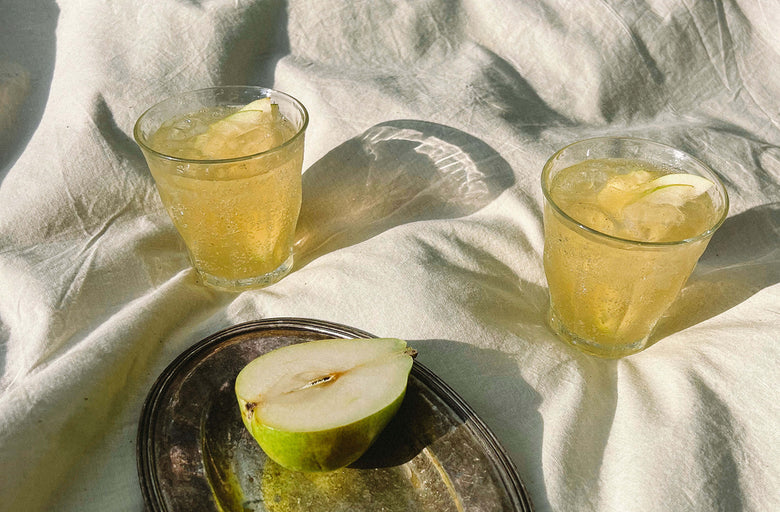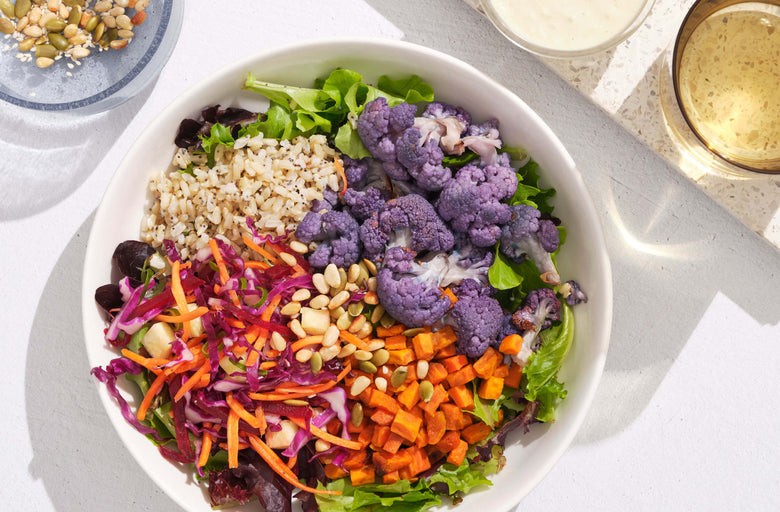Food fads abound, ranging from the reasonable to the extreme, and it’s easy to get trapped in the diet cycle in search of results. But one trend persists, ever since a physician named Lulu Hunt Peters penned her first-of-its-kind weight loss tome in 1918: counting calories. And though she may have been ahead of the curve in applying physics to the physique, obsessive calorie-counting is unhelpful, misleading, and even damaging when it comes to building the body you want. After all, calories don’t tell you anything about a food’s nutrient density or value. A calorie is a measurement of energy within a fixed system—which the human body is decidedly not.
What if you could forego all that mental math with a tool you already possess that greatly influences your body composition and weight? And what if it wasn’t hidden in a nutrition panel, but rather, follow you everywhere, weighing in at about five pounds? We’re talking about the microbiome, which refers to the 38 trillion microbes that reside in and on your body, particularly in the digestive tract. And in your quest for a body you love, it’s either working for you or against you.
Your Microbiome: The Ultimate Influencer
While human genetics are almost 99% identical, research suggests that our microbial makeup is only 50% the same, meaning what you eat can affect your body differently than others’ depending on the bacteria that populate your gut.
Case in point: in a recent study, mice fed a high-fat, high-fiber diet gained less weight and suffered less chronic inflammation than mice fed a high-fat diet devoid of fiber. The mice on the high-fiber diet had ten times the bacterial diversity in their guts as the low-fiber mice, evidence that the body is better able to maintain a state of health when a vast array of the right kind of bacteria are present.
The phenomenon goes both ways. Various studies have revealed that appetite is guided by specific bacteria in the gut. An overgrowth of Candida albicans, a pathogenic yeast, can cause intense cravings for sugar, because candida feeds on the sweet stuff. In short, you crave what your dominant gut bacteria crave. So if you find it hard to resist the siren song of the post-dinner sweet, your gut microbes may be responsible.
A Balancing Act Between Gut Bacteria
Much of the gut microbiome’s power over appetite, cravings, and weight has to do with its influence on the endocrine system. Comprising the pituitary, thyroid, parathyroid, and adrenal glands;, the pancreas; and the male and female reproductive organs, this complex network produces 50+ hormones that rule over everything from sleep to sex. And these chemical messengers play an arguably bigger role in weight than the aforementioned calories.
Take estrogen, the primary female sex hormone. When it’s present in excess, it causes persistent bloat and weight gain. Or leptin and ghrelin, the hormones that determine satiety and hunger cues in the body: When they are skewed, you can forget about relying on your innate wisdom to decide when to eat and when to stop. And of course, there’s cortisol, the stress hormone. When it spikes due to factors like excessive sugar and alcohol consumption, lack of certain nutrients, and—yes—too much emotional stress, belly fat often results. Lest that term conjure Facebook ads touting dubious diet pills, consider this: visceral fat in the midsection is particularly risky because it’s linked to Type 2 Diabetes and heart disease. According to Dr. Aviva Romm, it’s also a “full-on hormone factory, producing chemicals and hormones that confuse your hunger and fullness signals, [in turn] making you eat more and still not feel full. It’s also pumping out loads of chemicals called cytokines that cause inflammation, depression, and chronic disease.” All the more reason to think beyond aesthetics and consider the holistic effects.
The gut microbiome impacts almost all 50 of these powerful hormones, producing them outright or regulating the amounts in which they are produced and released. So in order to maintain a healthy endocrine system—one that supports optimal weight, whatever that may be for you—you must have a balanced gut microbiome.relieve yourself of a lifetime of diet-related stress, free yourself from dieting, and make yourself at home in your body
Tips for Feeding Your Microbiome and Your Best Body
To build a gut that supports your wellness goals, fiber is your best friend for several reasons. For one, the microbes in the gut feed on prebiotic plant fiber, and lots of it. The average American diet features barely 15 grams of fiber of any kind per day, a deficiency that inhibits those bacteria from performing their hormone-balancing, craving-regulating, nutrient-absorbing tasks. Fiber also encourages healthy bowel movements, an integral step in ridding the body of excess estrogen, thereby maintaining hormone balance.
Now, when we say “fiber,” we definitely don’t mean tasteless breakfast cereals and processed crackers. A fiber-full diet isn’t a drag at all—in fact, mixing it up is highly encouraged. A diverse plate is the best way to create a melting pot of bacteria, and ultimately a thriving inner universe in which the good bacteria crowd out the bad (like sugar-loving candida, pathogenic E. coli, and so forth).
Support your gut bacteria, beginning with the tips below, to relieve yourself of a lifetime of diet-related stress, free yourself from calorie-counting and dieting, and make yourself at home in your body.
Aim for at least 35 grams of fiber daily (the Sakara Nutrition Program provides 37 grams daily). Favor prebiotic-rich foods such as garlic, leeks, dandelion greens, asparagus, legumes, bananas, and chicory.
Defeat cravings with a high-quality probiotic. To crowd out the microbes that lust after junk food, seek out strains like Lactobacillus acidophilus and Lactobacillus rhamnosus.
Don’t get stuck in a dietary rut. Look to your hunter-gatherer ancestors, who enjoyed a bounty of more than 142 species of plants on average, for inspiration—or a Sakara Nutrition Program, which packs 75 different plant varieties into your daily diet..
Use plant medicine to hydrate the body, nurture the hormones, and heal the gut all in one go. Choose high-quality herbal teas with functional botanical ingredients like lemongrass for soothing digestion, rose to calm adrenal system (the center for our fight-or-flight response), and immunity-boosting rooibos.
Your Guide to Heal the Microbiome






